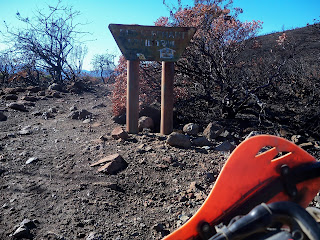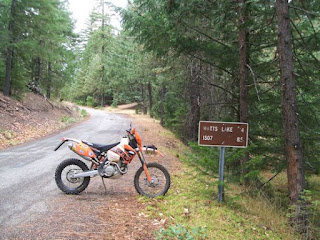Vista on Ridge Trail
QWR just finished a post-Jerusalem Fire field review of
the BLM’s Knoxville OHV Area located about 13 miles east of Lower Lake,
California. This remote low elevation 17,700
acre riding area has a good mix of easy roads for beginners and some very
challenging OHV trails that will test the ability of even the most experienced
rider.
Entrance to Red Elephant Mine Trail
One of those black diamond dirt-bike routes is the Red
Elephant Mine Trail. This is an 8-mile
long trail that traverses some steep terrain.
It also presents the rider with some rocky downhills, tight switchbacks,
and several rock gardens.
Rock Garden on Elephant Mine Trail
Since most of the trails are south facing with reduced vegetative
cover (thanks to the Jerusalem Fire), the trails are dried out enough for
riders to enjoy within 1-2 days of an average rain event.
Use Caution When Trail Riding in Burn Area
The BLM has an ongoing resource protection program and is
in the process of updating the areas’ travel management prescriptions.
Road/Trail Barriers to Protect Resources
The North Staging Area is convenient for day riders who
want to explore the trail network. It
has a vault toilet and ample parking for a number of trucks. Hunting Creek Campground is the southern
staging and campground area. It has
several campsites and a vault toilet.
Hunters Creek Campground
QWR suggests that experienced riders recon the area
before bringing up beginners and/or small groups. This is a great area for winter riding when higher
elevation trails on other units are closed due to snow or wet weather.
Engineered Trail from Hunters Creek Campground
QWR is excited about this area because it also has the
potential to provide some excellent adventure/dual-sport opportunities for
riders who want to explore this portion of the Berryessa-Snow Mountain National
Monument.
Link to Knoxville OHV Area

















































